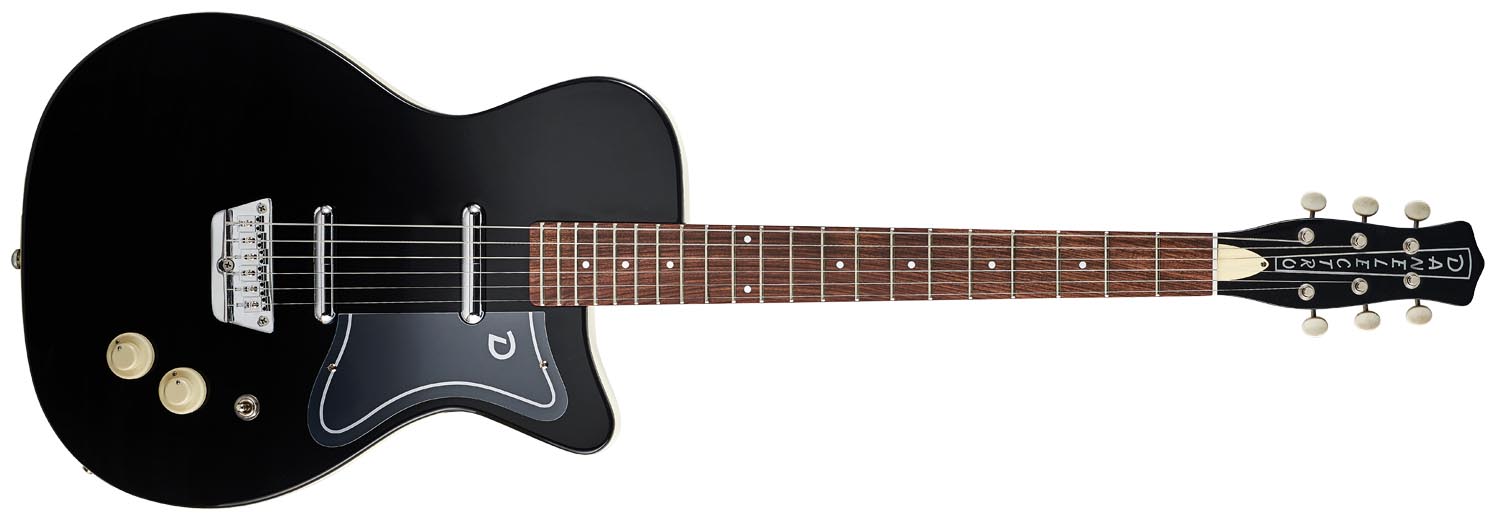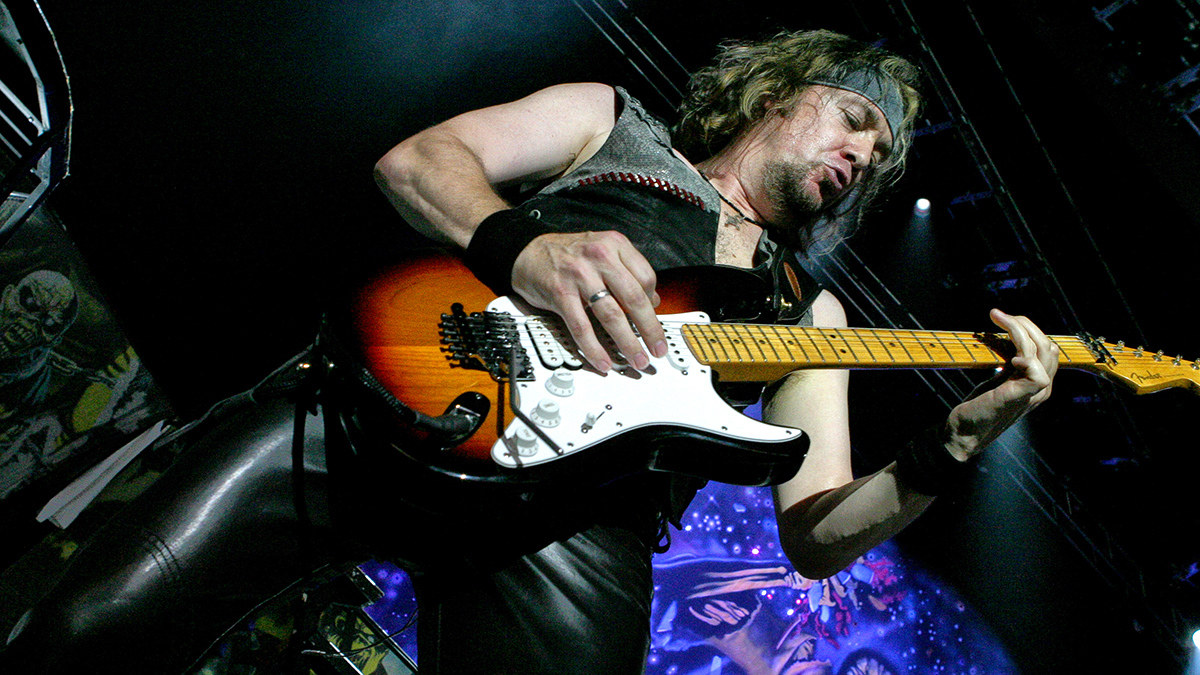Guitar World Verdict
The ’59 Divine and '57 Guitar are classy repros with solid-wood frames and a number of contemporary improvements and more than a few quirks too, but for a retro electric that's trashy in all the right ways, there's nothing to beat them.
Pros
- +
Wide range of tones.
- +
Improved pickups.
- +
Bone nuts.
- +
The tuners are better quality.
- +
So, too, are the knobs!
Cons
- -
Quite highly priced when compared with other models.
- -
No gigbag included.
You can trust Guitar World
While there are probably enough tomes written on the big brands from the 50s and 60s to fill a small library, Danelectro and the guitars and amps that the company made – also under both the Silvertone and Airline brand names – are far less documented.
Thankfully, Doug Tulloch’s Neptune Bound: The Ultimate Danelectro Guitar Guide, originally published in 2008 by Centerstream Publications, is the bible for anyone interested in the unique story of Danelectro, ourselves included. And as we paraphrase elsewhere in this feature, it’s quite a story.
Today’s Dano necks are much more conventional than the original design. Back in the day, Danelectro used Brazilian rosewood for the fingerboard – imagine that!
While repros of many original models have been in circulation since 1998 – a far longer period than Danelectro originally made guitars – it seems we still can’t get enough of these unique designs.
Every year, the Dano owners release a trickle of new designs and it’s about time someone started to document these! Our review duo was launched back at the start of 2020, along with the more Mosrite-inspired ’66 12 String, some left-handed models and that latest incarnation of the ‘Page’ ’59M NOS+ with an expanded choice of colours.
But both of our new guitars here look rather familiar, don’t they? Let’s take a closer look.

’57 Guitar
Nat Daniel’s take on the affordable production electric guitar was not a million miles away from what Leo Fender was creating on the other side of the continent: a single-cutaway, slab-bodied electric with a 21-fret bolt-on neck and two single-coil pickups.
The ‘peanut’ shape we see here is slightly larger than the Telecaster: 457mm (18 inches) long, 367mm (13.25 inches) wide and 41mm (1.6 inches) deep compared with the Telecaster (whose measurements are closer to 400mm/15.75 inches long, 324mm/12.77 inches wide and 45mm/1.8 inches deep).
All the latest guitar news, interviews, lessons, reviews, deals and more, direct to your inbox!
The design went through a couple of incarnations, beginning in 1954, before it found its stride as the U series of 1955 introducing the famous Masonite-topped, semi-solid body construction.
As per the original we have the distinct ‘Coke bottle’ headstock and the clear plastic ‘D’ logo’d pickguard
Our ’57 is effectively based on the 1957 U-2 (there was a single-pickup U-1 and triple-pickup U-3 plus a U-2 six-string bass that was introduced in 1956) and in basic style isn’t very different from numerous contemporary models we’ve seen over the past two decades.
As per the original we have the distinct ‘Coke bottle’ headstock and the clear plastic ‘D’ logo’d pickguard. Exactly what body materials Danelectro uses today isn’t offered up on the company’s website, although the top and back are definitely some kind of compressed wood, approximately 3.5mm thick, which looks more like MDF than hardboard or the original Masonite.
“Masonite is, of course, a brand name for pressed wood,” says Evets’ Steve Ridinger. “I think today many people call that material MDF. For our guitars we use a much more dense type of pressed wood than what might be commonly called MDF. The benefit of the hardboard material is it increases body resonance.
”In a guitar like a Strat, you have the pickup in a cavity so it largely just picks up the sound from the strings. But in Danelectro guitars with the hardboard, there are many sound reflections inside the mostly hollow body: sound is bouncing off the back and front inner surfaces of the guitar body, and the pickup is receiving all of that reflected sound.”
The frame here is a soft, creamy coloured wood that could be one of a number of timbers and is different from the plywood of earlier reissues. It’s pretty hollow, although the sides are kept quite thick and there’s still a large wood block underneath the bridge.

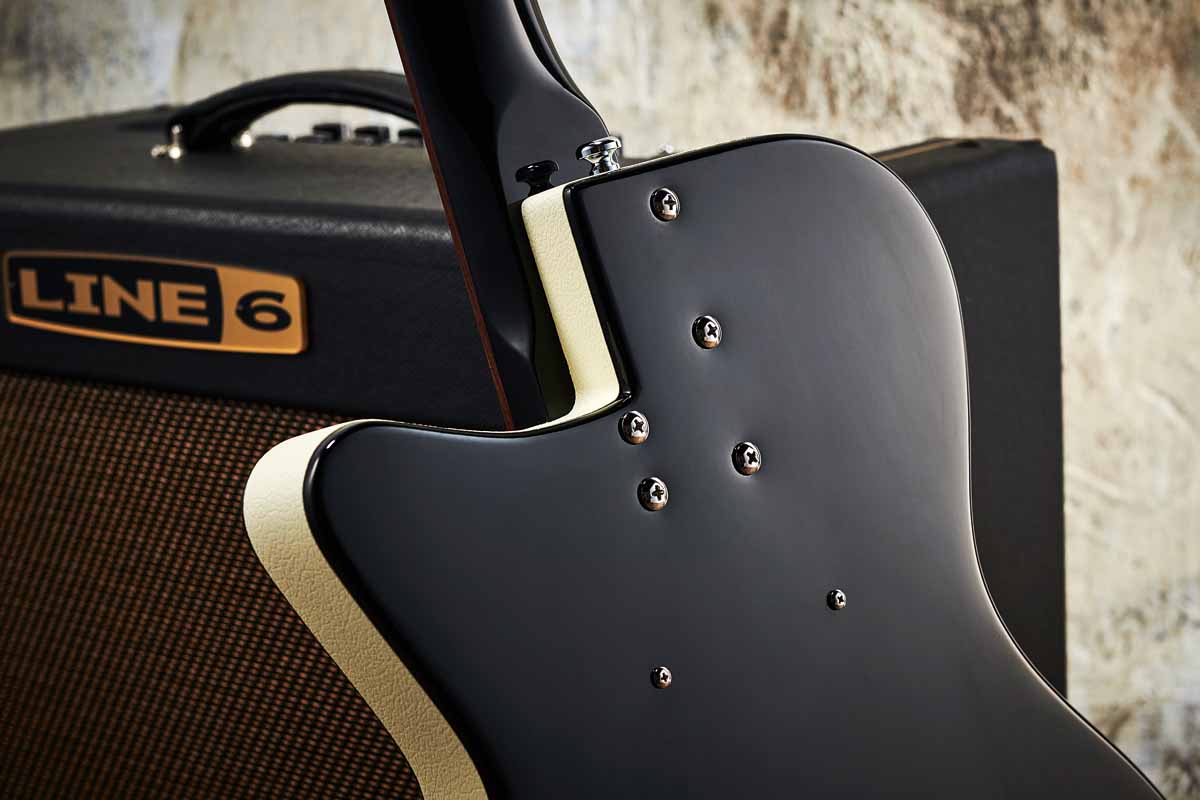
“We switched from the plywood frame to a spruce frame in the middle of last year,” continues Steve. “There are two benefits to this solid-wood spruce frame. Firstly, better tone. Spruce is, of course, a tonewood and the glue in the plywood layers tends to impede sound vibration. Secondly, there’s less chance of the frame chipping in spots where the wood is thin – namely, the neck pocket.”
Today’s Dano necks are much more conventional than the original design: maple with a two-way adjustable truss rod and a pau ferro fingerboard. Back in the day, Danelectro used Brazilian rosewood for the fingerboard – imagine that!
But it’s not a slavish reissue. The famous aluminium nut, for example, is replaced here with nicely cut bone. That original ‘four-way adjustable’ bridge (up, down, forward and back) with its Brazilian rosewood saddle is updated with the more contemporary Danelectro design that has adjustable metal saddles.
It still mounts in the same fashion as the originals: it sits above the face of the guitar resting on two height-adjustable screws at the front and is held in place by the single screw that mounts through the back of bridge into the body.
The saddles look like solid versions of Fender’s pressed steel Strat types with a central locking bolt and two screws for individual height adjustment. Rather oddly, the very nice Gotoh Deluxe three-on-a strip tuners and their cream buttons are aged while everything else looks brand-new.
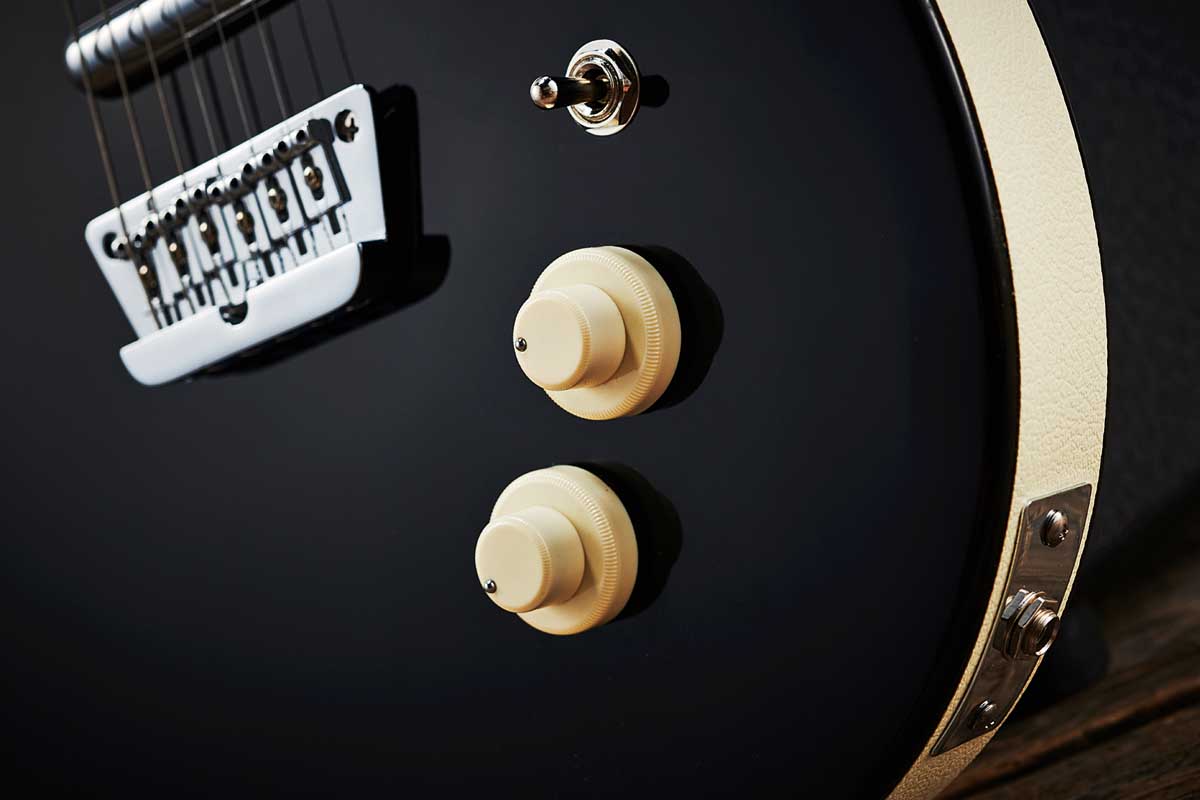

’59 Divine
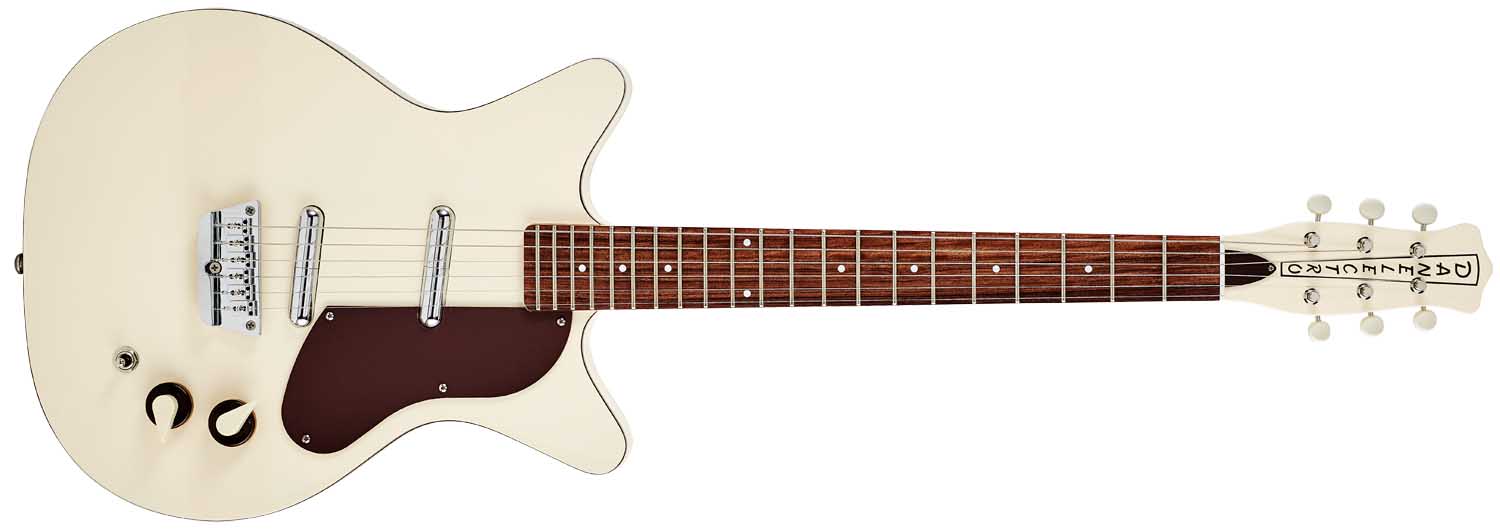
Thanks to Jimmy Page, the double-cutaway ‘shorthorn’ design will be burned into every guitarist’s psyche for evermore. And judging by the number of shorthorn models currently offered, it’s easily the most popular.
Thanks to Jimmy Page, the double-cutaway ‘shorthorn’ design will be burned into every guitarist’s psyche for evermore
Modelled on the top-of-the line 1959 Deluxe (originally the model 6026), construction here is identical to the ’57 – shape aside, of course – although here the gloss cream finish covers top, back and sides and we have a brown binding to the top and back edges.
Another difference, certainly on the other two ’59 Divine colour options (Dark Walnut and Flame Maple), are wood veneers on the top and back. The same ‘Coke bottle’ headstock is retained.
The pickguard would originally have been white or walnut-painted Masonite that was glued to the top but here it’s a rather sharp-edged brown opaque plastic that’s screwed to the top.
Danelectro used a different number of screws to secure the necks on its various models back in the day and that’s reflected here with five screws on the ’57 and four on the ’59, which more likely would have had three screws in a straight line back in the 1950s.
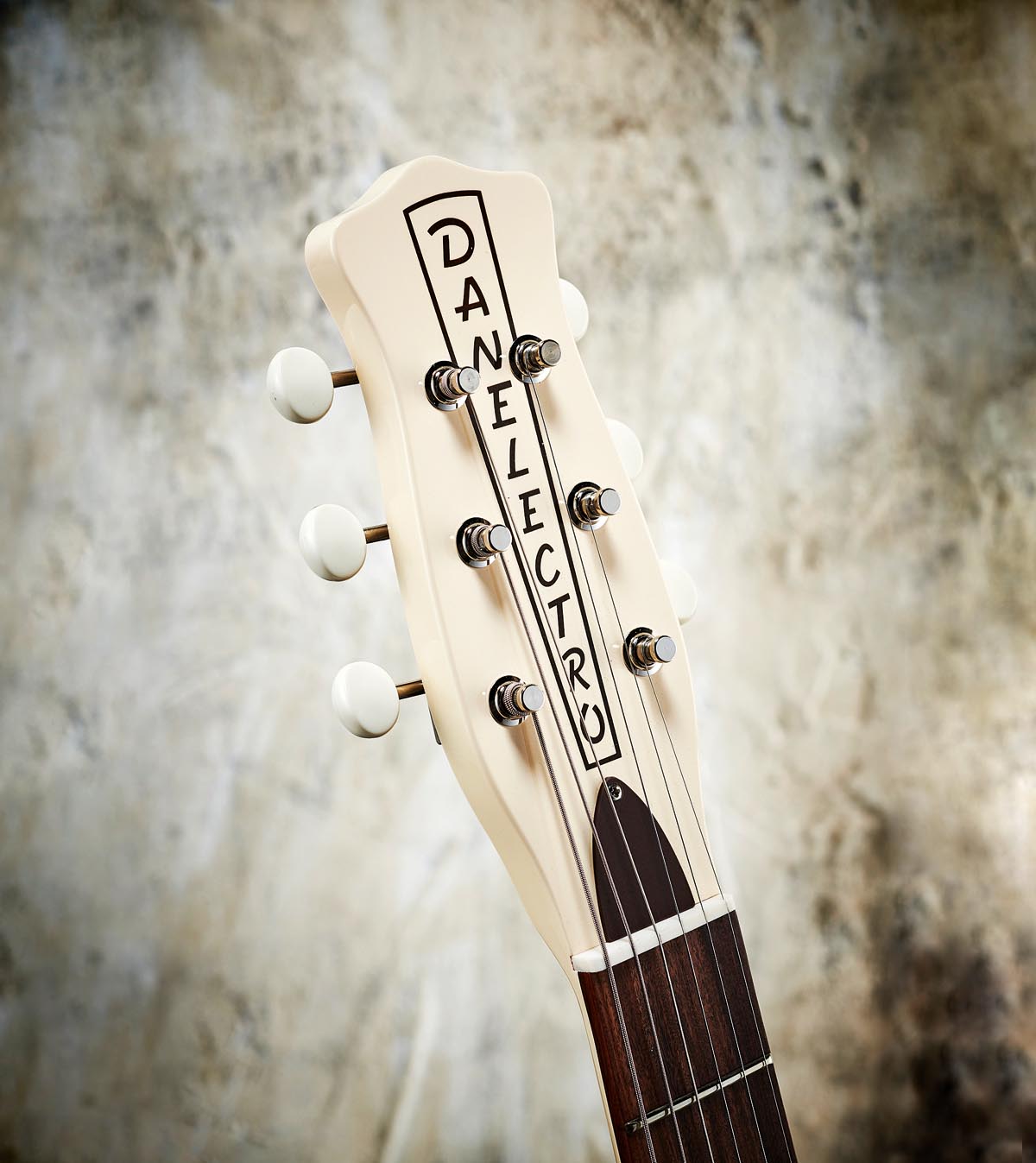

Both necks sit on a similar length heel platform that’s slightly thinner in width than the neck on the ’59 and quite a lot narrower on the ’57 on the treble side – this was originally where the upper strap button would have been placed.
Today, that button sits at the tip of the heel. Another thing separating the two models is the actual placement of the single-coil pickups, even though both use two single coils.
The centre of the ’57’s bridge pickup sits approximately 35mm in front of the bridge; the neck single coil is 135mm away. The ’59’s pickups are slanted so the treble side sits closer to the bridge than the bass side: 26mm to 32mm for the bridge pickup and 113mm to 120mm for the neck.
This placement means that you’d expect a little more treble cut on the ’59’s bridge pickup and less depth on its almost mid-placed ‘neck’ pickup. Conversely, we’d expect the ’57’s bridge pickup to have less treble while the neck pickup should be a little deeper sounding. We’ll see.

Feel & Sounds
Both guitars weigh in the same and are nicely light, too – they hang well from a strap, though. The extended heel stops directly under the 14th fret and houses the upper strap button, and despite the guitars’ differing outlines, the heel’s position means fluid upper-position fretwork is somewhat compromised on the ’59, and slightly more so on the ’57.
If you like slim necks, you’ll feel at home here and we could be describing a contemporary shred-friendly design. 1st fret depth on both is 19.9mm, filling out a little by the 10th to 22mm.
In profile we have a flattish ‘C’ without the shoulder of a D shape, which is combined with a pretty flat fingerboard radius that we measured at 392mm (16 inches), not the quoted 356mm (14 inches).
This slightly unusual feel is enhanced by a medium width wire that is a little on the low side (around 2.67mm by 1mm), and you can’t help thinking a slightly higher wire with just a slightly rounder fingerboard would elevate these further.
Mind you, both are set up nicely and intonation is very good – unlike some originals we’ve played over the years. Scale length, by the way, is 635mm (25 inches), the same as PRS.
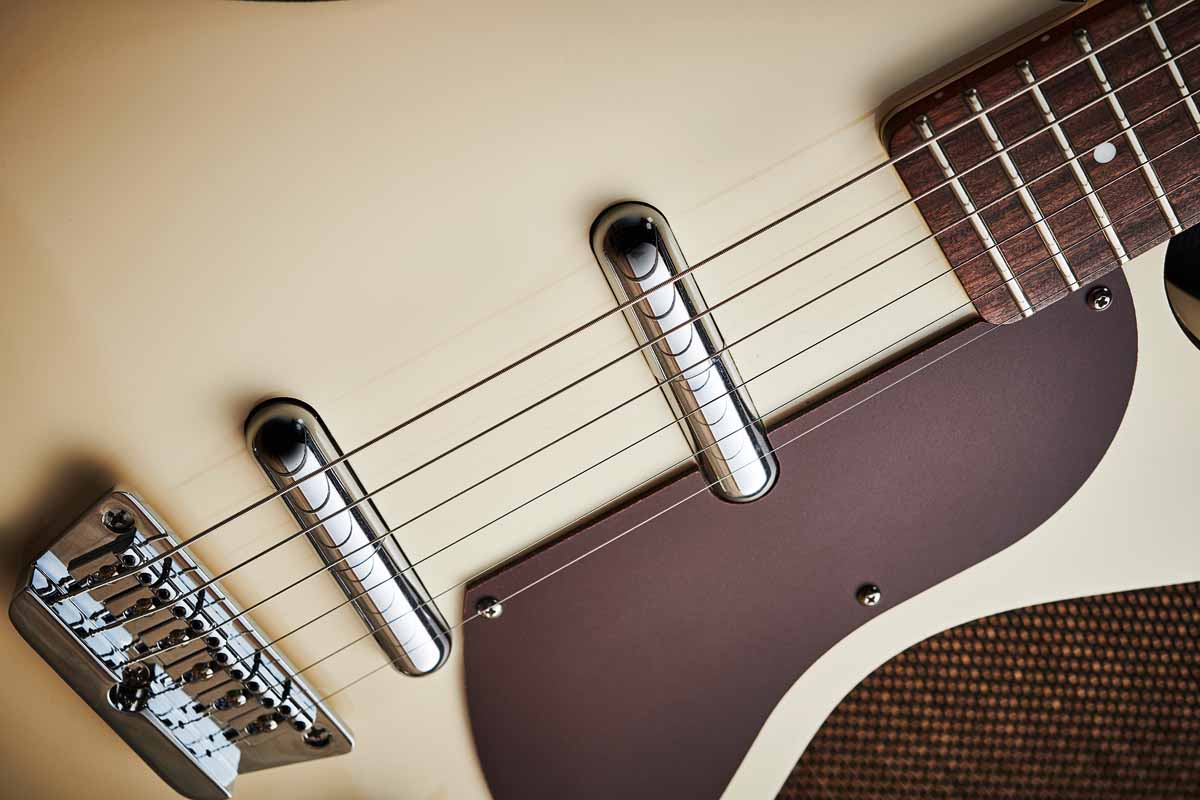
Quite possibly the last guitar you’d want to take out on a long covers or function gig, the Danelectro sound shoots for character, which frankly both of these models have in abundance. We discuss the new Vintage 50s single-coil pickups elsewhere in this feature but our first impressions are that the output is low and bass is light.
The ’57 sounds a little thicker at the bridge, more clouded at the neck, and there’s quite an open midrange. In the mixed pickup position, due to the series wiring, the volume leaps, thickening the mids a little but still with a punchy clarity that reminds us of Supro’s Vistatone single coil: sparkle, some balls and quite a gnarly grind.
Through a clean amp with lashings of reverb and some tremolo, you’re in a David Lynch film soundtrack with either model: hugely evocative
For many, this is the Dano sound and you can use the volume and tone stacks to subtly shade what you’re hearing. Obviously in the same camp, the ’59 sounds just a little spikier at the bridge, the neck has more clarity (not surprisingly bearing in mind its position) and the series mix sounds marginally more focused.
Through a clean amp with lashings of reverb and some tremolo, you’re in a David Lynch film soundtrack with either model: hugely evocative. Add a little hair and the quite dynamic voice breaks up nicely. Kicking in various overdrives and fuzzes helps to beef up the sound but the general bass-light character, as well as the bright attack, is really quite distinct.

While these very 50s/60s sounds are probably the main appeal, plug into a seemingly inappropriate and gusty gained Marshall-y voice and the sound is pretty spectacular: grimy, punky, and Stooges garage-rock in spades.
The stacked volume/tone controls take some getting used to and the ’59’s pointer knobs especially feel a bit Toy Town; it’s easy for that pointer knob to catch the raised indicator of the lower tone knob so both volume and tone move together.
It’s also plain confusing that the ’59’s functions are reversed. The ’57’s controls do feel better behaved. Even if we could, we’re not sure we’d head to a stage with the ’59 as is. Well, not unless we had some gaffer tape handy.
The actual tapers are okay, though, especially the range of the tone. As set, the neck pickups on both are louder than the bridge but on the ’59 especially it gives three distinct levels as well as sounds: bridge, neck, both.
Verdict
With the huge amount of choice in the lower-end of the guitar market, Dano’s original budget value seems rather compromised. These are the highest priced original-style Danos by quite a margin but that is reflected by the new Vintage 50s Lipstick pickups, the body construction, the bone nut and Gotoh tuners.
It would be quite hard to say these two Danos are the ‘best’ of the contemporary models we’ve played and heard over the past couple of decades.
These are very tidy ‘improved’ versions and both have oodles of original Dano character
With so many different versions of – broadly speaking – the same thing since that first 1998 repro U-2, it’s a bit of a blur. Still, these are very tidy ‘improved’ versions and both have oodles of original Dano character. Sonically, the ’57 here is a significant improvement over our U-2, which is at least a decade old.
Certainly if you’re chasing a retro voice, be it early electric blues (Danos and Silvertones were always loved for slide, too) or something with a trashier edge, you’ll find it here. But then as Jimmy Page proved, you can certainly make a Kashmir-sized racket with one of these. Every home should have one!
Specifications
Danelectro ’57 Guitar
- PRICE: $599/£799
- ORIGIN: South Korea
- TYPE: Single-cutaway semi-hollow electric
- BODY: Composite top and back over solid-wood frame
- NECK: Maple, C profi le, bolt-on
- SCALE LENGTH: 635 mm (25”)
- NUT/WIDTH: Bone/42mm
- FINGERBOARD: Pau ferro, small white dot inlays, 356mm (14”) radius
- FRETS: 21, medium
- HARDWARE: Hardtail U3 bridge with adjustable saddles, 3-on-a-plate Gotoh Deluxe tuners (aged)
- STRING SPACING, BRIDGE: 54mm
- ELECTRICS: Twin Alnico 6 Vintage 50s single-coil lipstick pickups, 3-way toggle, stacked volume/tone for each pickup
- WEIGHT (kg/lb): 2.7/5.94
- OPTIONS: None
- RANGE OPTIONS: The only other single-cut Dano is the ’56 Baritone (£629)
- LEFT-HANDERS: Not this model but lefty versions of the ’59M NOS+ (‘Page’ model), Vintage 12 String and Baritone are available
- FINISHES: Limo Black (as reviewed), Jade Green – both with cream coloured vinyl sides
Danelectro ’59 Divine
- PRICE: $699/£899
- ORIGIN: South Korea
- TYPE: Double-cutaway semi-hollow electric
- BODY: Composite top and back over solid-wood frame
- NECK: Maple, C profile bolt-on
- SCALE LENGTH: 635 mm (25”)
- NUT/WIDTH: Bone/42.69mm
- FINGERBOARD: Pau ferro, small white dot inlays, 356mm (14”) radius
- FRETS: 21, medium
- HARDWARE: Hardtail U3 bridge with adjustable saddles, 3-on-a-plate Gotoh Deluxe tuners
- STRING SPACING, BRIDGE: 54mm
- ELECTRICS: Twin Alnico 6 Vintage 50s single coil lipstick pickups, 3-way toggle, stacked volume/tone with pointer knobs for each pickup
- WEIGHT (kg/lb): 2.7/5.94
- OPTIONS: None
- RANGE OPTIONS: Shorthorn designs include the ‘modded’ ’59M NOS+ (from £599). The Stock ’59 is the closest to original spec double-cut (£489)
- LEFT-HANDERS: See ’57 Guitar
- FINISHES: Fresh Cream (as reviewed) Dark Walnut, Flame Maple – all with cream coloured sides

Dave Burrluck is one of the world’s most experienced guitar journalists, who started writing back in the '80s for International Musician and Recording World, co-founded The Guitar Magazine and has been the Gear Reviews Editor of Guitarist magazine for the past two decades. Along the way, Dave has been the sole author of The PRS Guitar Book and The Player's Guide to Guitar Maintenance as well as contributing to numerous other books on the electric guitar. Dave is an active gigging and recording musician and still finds time to make, repair and mod guitars, not least for Guitarist’s The Mod Squad.

